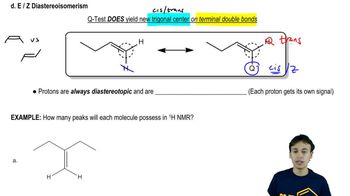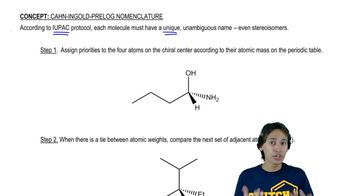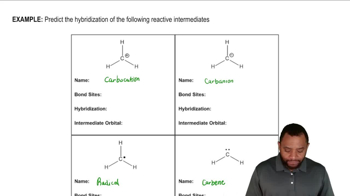Two compounds with the formula CH3–CH=N–CH3 are known.
b. What two compounds have this formula?
c. Explain why only one compound with the formula (CH3)2CNCH3 is known.
 Verified step by step guidance
Verified step by step guidance Verified video answer for a similar problem:
Verified video answer for a similar problem:



 4:28m
4:28mMaster How to name different types of double bonds or rings with a bite sized video explanation from Johnny
Start learning